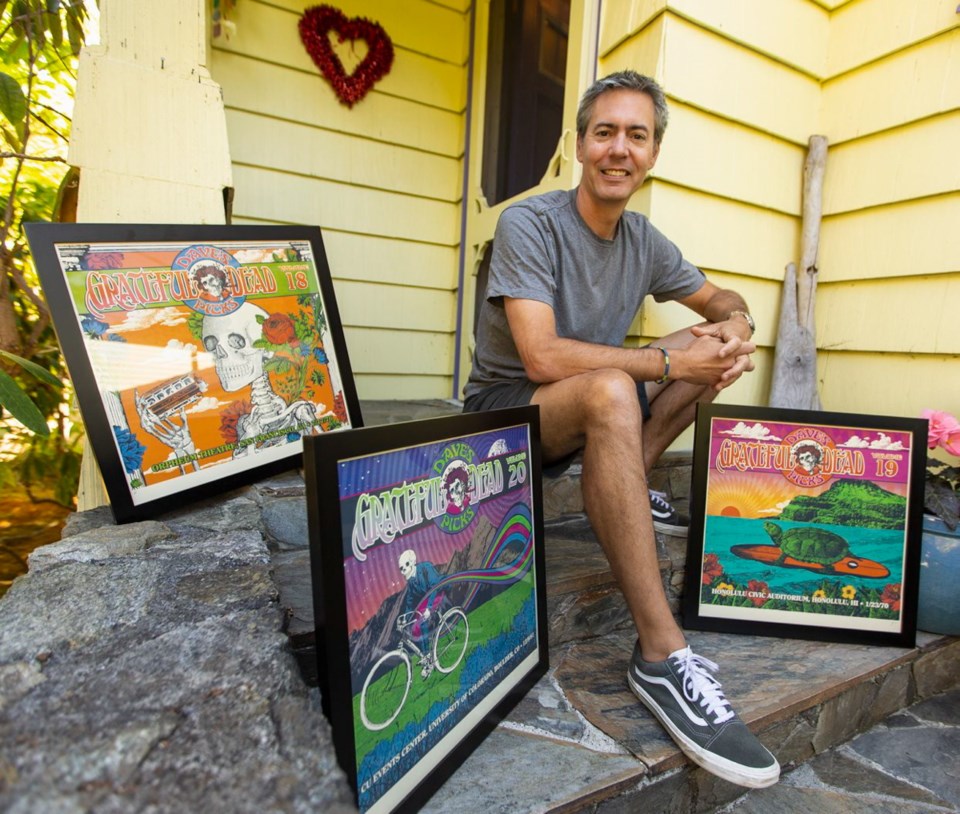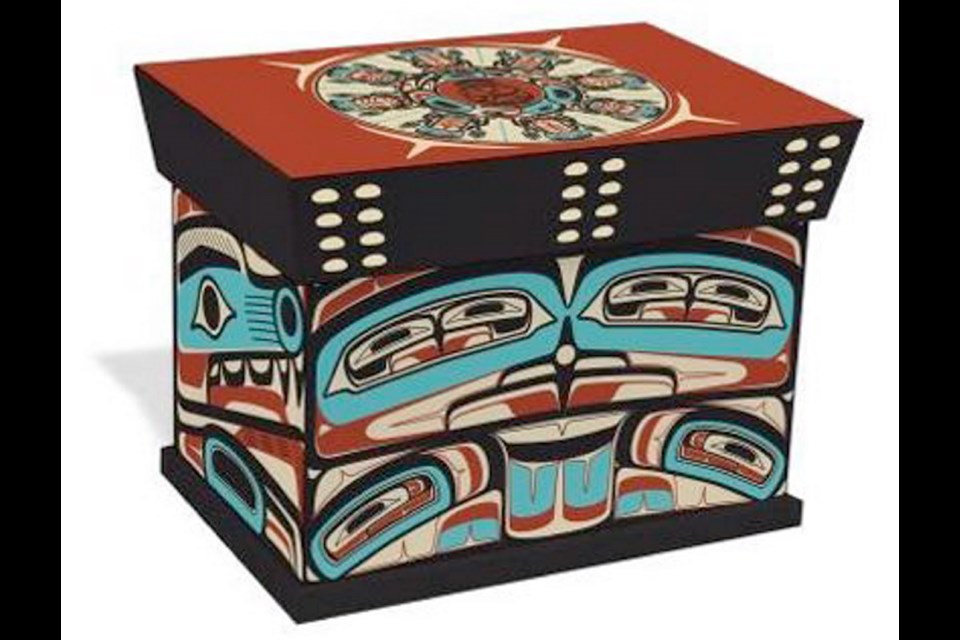A collection of unreleased concert recordings by the Grateful Dead — which spans two years, three cities, six concerts and 19 CDs — will be housed inside a replica First Nations bentwood box designed by B.C. artist Roy Henry Vickers.
Pacific Northwest ’73-’74: The Complete Recordings arrives Friday with full-colour packaging from Vickers, whose bold style has become synonymous with B.C. First Nations art. The set was overseen by the San Francisco group’s Victoria-based audio-visual archivist, David Lemieux, and chronicles concerts in Vancouver, Portland, and Seattle during what is considered the band’s peak.
Lemieux has been an employee of the Grateful Dead since 1999, and during that time has worked on more than 200 archival releases. In 2015, he oversaw 30 Trips Around the Sun, an 80-disc, 73-hour collection of unreleased concerts that became the largest boxed set in rock history. That was only one of a dozen Grateful Dead boxed sets Lemieux has worked on in the past 15 years. “There’s been a renewed interest in the Dead, as long as the quality of what we’re doing is maintained,” Lemieux said.

“When fans are digging into these archival releases, they are finding incredible music throughout the 30-year touring career of the Dead. People are really into this band, more than they’ve ever been.”
For Lemieux, Pacific Northwest ’73-’74 is more meaningful than some of the other projects. It brings artwork synonymous with Vancouver Island to an international audience, Lemieux said, with the potential to spread further. Grateful Dead boxed sets have earned three Grammy Award nominations for package design in the last five years. That’s an achievement Lemieux would like to see for Vickers.
“He knows the Pacific Northwest and First Nations imagery more than anyone,” Lemieux said. “He made sure the imagery that is important to this region was represented. It has been great working with somebody who has been so inspired by the region and the themes of that region, as opposed to the music. It’s been a really great partnership.”
Vickers moved from Victoria to Hazelton, north of Prince Rupert, 14 years ago, though he still has a gallery in Tofino. Lemieux was introduced to the artist through Victoria historian Robert (Lucky) Budd, with whom Vickers has co-authored a series of award-winning books, and who also plays in Canadian Beauty, a Victoria tribute band to the Grateful Dead.
Vickers admits to being more of Bob Dylan guy than a Grateful Dead one, so he came into the project somewhat inexperienced on matters pertaining to the group. He spent a year researching ideas but, in the end, Lemieux and the creative team at the Grateful Dead’s record label, Rhino, gave him complete artistic license, Vickers said.
“When I first started with the idea, I started with the band’s iconography — the skull, the lightning bolt, the roses — and by the time I got seriously into the project, they literally said, ‘Throw everything out of your mind about the Grateful Dead and the iconography. We want you to do whatever you want to do. Don’t include anything unless you’re inspired.’ The more I got into it, the more I could see how it was meant to be.”
Four animals — eagle, whale, raven and wolf — representing the four clans of every coastal First Nations community adorn the sides of Pacific Northwest ’73-’74, Vickers said. He created additional artwork as well. In addition to the 19-disc compendium (which retails for $189.98 US), Rhino is also offering a budget-conscious 3-CD compilation ($24.98 US) and six-LP set ($129.98 US), each with variations of Vickers’ artwork. The project is expected to provide an added financial bonus — he will be selling signed Pacific Northwest ’73-’74 prints at his gallery in Tofino — but that isn’t what drew Vickers to the project.
During his research, Vickers uncovered a shared aesthetic. Neither chose fame as their motivation, nor did he or the group put monetary demands on decisions made with regards to their art. “I kind of got disillusioned with being a professional artist — it was all about money and popularity, and not about the message I wanted to share with the world,” Vickers said. “The more I looked at this project, the more I realized what a perfect fit this was.”
It was Vickers’ decision to house the collection in a replica bentwood box, a traditional item that was used as a treasure chest by First Nations and played a key role in potlatch ceremonies.
It offers even more symmetry between himself and the group, Vickers noted. “In our culture, the potlatch is pre-eminent. And in the beginning of the potlatch, it’s all about honouring the dead. Those who have gone before, the ancestors, they are the grateful dead. They are witnessing what we are doing, and they are grateful. And they are dead.
“When you open the lid, you are sharing with the world what is stored inside. In this case, that is the music and songs.”



